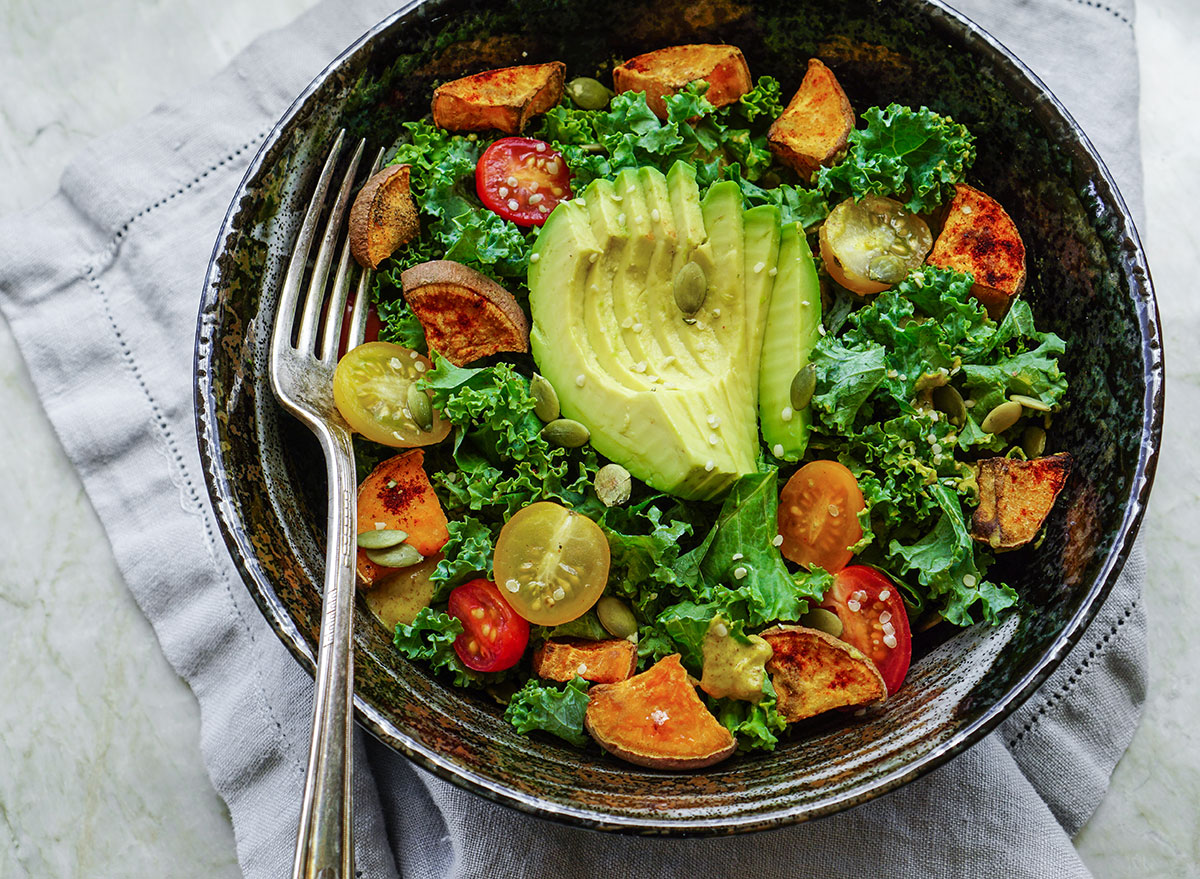Paleo for Beginners: An Expert Guide to Adopting the Popular Caveman Diet

Before the keto diet came along, few eating plans were more popular (and more controversial) than the paleo diet.
Even as keto takes over the spotlight, approximately 7 percent of Americans (or around 22 million people) reported consuming a paleo diet in 2018.
People might choose this diet for a number of reasons, from a desire to lose weight to simply wanting to eat more whole foods and fewer processed foods.
If you’re thinking about hopping on the paleo bandwagon, read on to learn everything you need to know about getting started with the paleo diet.
What is the paleo diet, and where did it come from?
“The word ‘paleo’ is short for paleolithic, and is based on the philosophy that humans were meant to eat just as our hunter-gatherer ancestors did thousands of years ago,” says Lisa Samuels, RD and founder of The Happie House. The Paleolithic era ranged from approximately 2.5 million to 11,000 years ago.
Even though the diet draws its inspiration from millennia past, it got its contemporary start in the 1970s.
“The diet originated in the 1970s and was created by a gastroenterologist,” Samuels says. “However, an anthropologist named Dr. S. Boyd Eaton is responsible for popularizing paleo.”
Eaton evangelized the paleo diet because he thought modern diets might be doing more harm than good.
“He posited that humans are in poor health because genetically, we are predisposed to eating how the cavemen ate, and that we were never meant to consume most of today’s modern foods,” Samuels says.
There’s ample debate about the accuracy of those sentiments, but they continue to inform the perspectives of many of today’s paleo fans.
What foods are (and aren’t) allowed on the paleo diet?
In keeping with the idea that modern foods might be harmful to humans, paleo emphasizes eating only those foods that would have existed during the Paleolithic period.
“The parameters of the diet state that we should be eating only foods that existed in a pre-agricultural time period,” Samuels says. “In other words, we should only be eating natural, whole foods that occur in nature.”
Per Samuels, that list of foods includes (but is not limited to):
- Fruits
- Vegetables
- Protein in the form of meat and/or fish
- Nuts and seeds
- Natural forms of sugar, such as honey and maple syrup
Meanwhile, Samuels says “foods that have been harvested by agricultural means are off-limits.” That means the paleo diet excludes all of the following:
- Grains
- Legumes
- Potatoes
- Dairy
- Salt
- Cane sugar
The diet also advocates for avoiding any food that’s been highly processed.
The potential health benefits of eating paleo
“The paleo diet is great because it really boasts a natural and whole way of eating,” Samuels says. “It helps to cut out foods that might negatively affect our health, such as items that are deep-fried, high in fat and sugar, and highly processed.”
Consuming whole foods and cutting out potentially harmful ones may offer significant health benefits.
“[It’s] very helpful for maintaining low blood pressure, low blood sugar, and might even assist with weight loss and warding off cardiovascular disease,” Samuels says.
Eating paleo might also assist with weight management and provide sustained energy that keeps you going through the day.
“It’s naturally a diet that’s high in protein, fiber, and healthy fats, so you feel more satisfied from your meals and snacks,” Samuels says.
A recent study also suggests that eating a paleo diet might improve people’s gut health (although it’s unclear whether this remains true over the long term). Another 2019 study found that people who followed a paleo diet were less prone to food cravings, emotional eating, and negative mood.
The potential drawbacks of eating paleo
While paleo can offer a range of benefits, it’s not without potential downsides.
“The emphasis on meat as a form of protein can potentially be harmful,” Samuels says. “Many meats are high in saturated fat, which can increase your risk of developing cardiovascular disease. Also, unless you are purchasing all-natural, hormone- and antibiotic-free meat, you could be consuming other products and chemicals that aren’t good for our bodies.”
What’s more, Samuels says people who eschew grains may miss out on the benefits offered by consuming whole grains. “Whole grains not only are high in fiber, but they also contain a ton of B-complex vitamins that you can miss out on with this diet,” she says.
People who follow a paleo diet may also miss out on the calcium found in dairy products and the fiber and nutrients found in legumes. A diet that’s low in calcium may be especially concerning for people at risk of osteoporosis.
Beyond potential health concerns, another drawback of eating paleo may be that the diet can sometimes feel restrictive. “Cutting out entire food groups is never easy, especially if you love those foods,” Samuels says.
Finally, this diet may provoke budgetary concerns. Eating a lot of organic, ethically raised fish and meat isn’t necessarily easy on the wallet!
All told, it’s up to an individual to determine whether this diet is right for them—ideally with the input of a medical professional. Some people thrive when eating like a cave-person, while others will want to keep hunting until they’ve found the ideal eating strategy for their own bodies.








